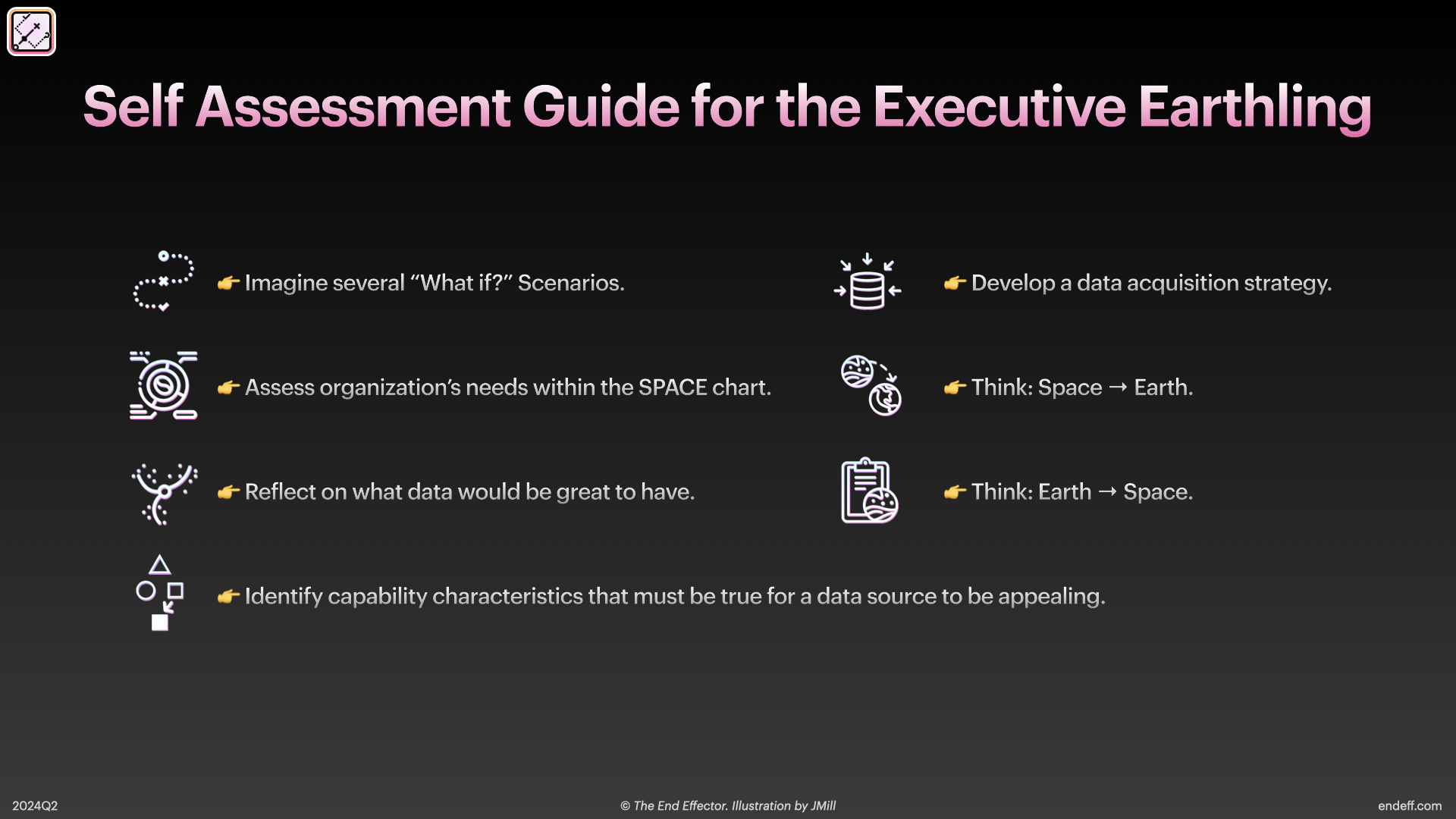Self Assessment Guide for the Executive Earthling
by JMill. March 15, 2024 | Space for Earthlings 🌏🛰️

This is a guide that a business leader can utilize to evaluate how the organization can become Space-informed. It can be useful for an interdisciplinary team to work on independently to share findings, identify unknowns, and establish an organizational learning agenda. This can underpin the development of a plan so the organization has specific individuals who are directly responsible for tracking developments and engaging with prospective collaborators.

👉 Imagine several “What if?” scenarios.
What are all the physical assets your organization should track? What if you could know where all of them are in real-time? What if you competitor also knew where all of your assets were? Suppose your organization is scouting new site locations. What if you could anticipate which prospective sites would be denied property insurance due to insurers’ climate-informed policy changes? What if your organization’s engineering team could identify and incorporate at comparatively low-cost, Space-derived technology?
👉 Assess organization’s needs within the SPACE chart.
This can aid in identifying which areas to direct attention for your organization in order to track new developments and collaborations.
👉 Reflect on what data would be great to have.
If there are particular characteristics you would want to know about any location on Earth, what would they be? Could be soil characteristics, what’s inside a building, where a particular mineral is located, how much energy is being generated, micro-weather forecasting, or the contents of illegal dumping.
👉 Identify capability characteristics that must be true for a data source to be appealing.
For now, deprioritize price point. Minimum viable and nice-to-have data cadence? What happens if you get a new batch of data once an hour versus once a year? How does it impact your organization? How would you invest resources differently?
👉 Develop a data acquisition strategy.
Assess how your organization can achieve holistic data collection and decision-making. Space-bourne data is just one form; how does it complement other forms such as from humans in aircraft, humans on the ground, autonomous drones, and other sources? How can you prepare your organization to ingest multi-modal data sources to make better-informed and better-timed decisions?
👉 Think: Space → Earth.
Review intellectual property portfolios from NASA’s Technology Transfer Program, the top provider of such licensable technologies.1 Licensing a patent can be the start of a long-lead research and development endeavor, but can provide standout performance for the licensing entity as it gets novel product-services to market based on space-derived underlying technologies.
👉 Think: Earth → Space.
Proactively engage with Space players to problem-solve, generate ideas, and to understand where they are experiencing bottlenecks in communication throughput, compute, sensing reach, and partnerships. There can be fruitful relationships built around new lines of business and capabilities that are increasingly shareable as Space systems become less ‘boutique’ in their designs and can benefit by adopting interoperation standards and terrestrial-grade hardware.
⃪ View “Tunable gravity”
(previous article)
View “Is Space just cool, cold, and costly?” →
(next article)
“…but deep down, don’t you feel it, too? ‘Maybe someday’ is just today waiting for a nudge.”
Net proceeds from The End Effector are given to foundations, initiatives, and charities advancing interdisciplinary sciences.

